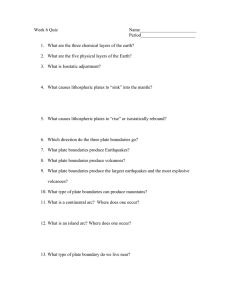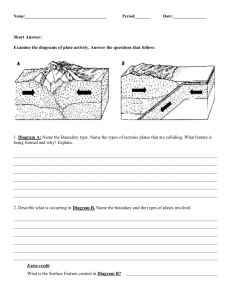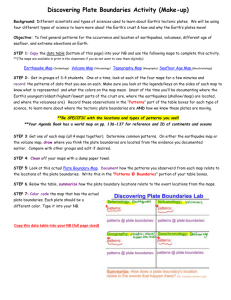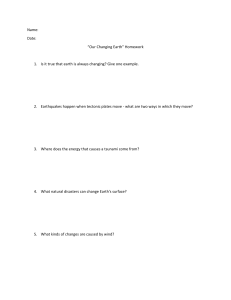Plate Tectonics Lab Activity: Observing Plate Boundaries
advertisement
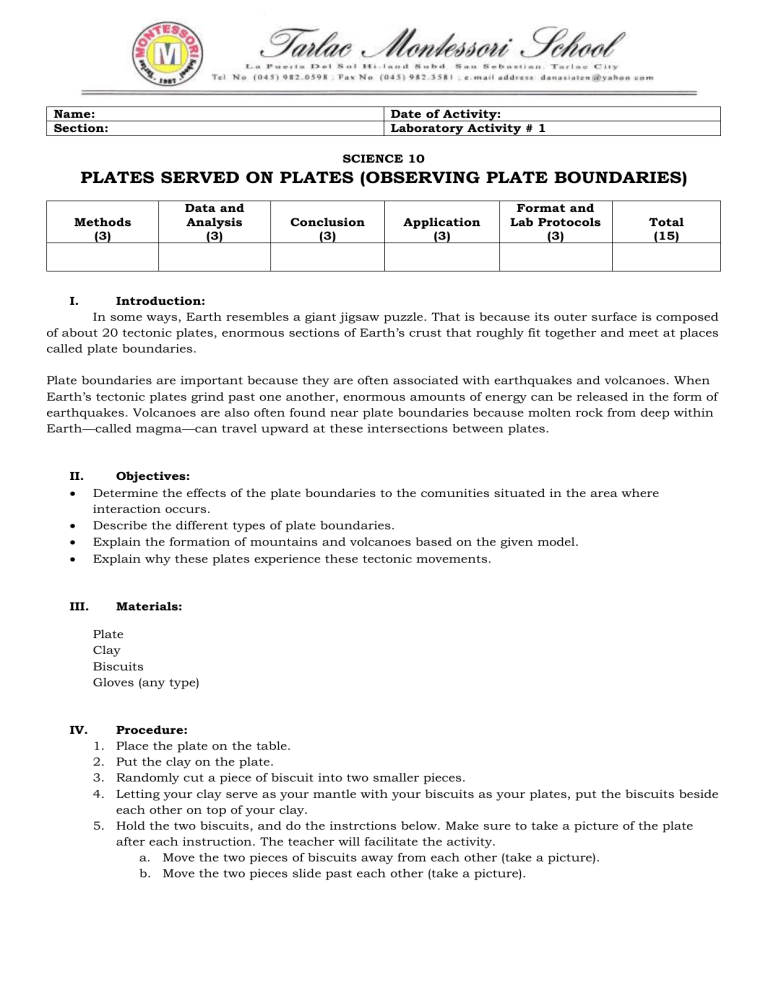
Name: Section: Date of Activity: Laboratory Activity # 1 SCIENCE 10 PLATES SERVED ON PLATES (OBSERVING PLATE BOUNDARIES) Methods (3) Data and Analysis (3) Conclusion (3) Application (3) Format and Lab Protocols (3) Total (15) I. Introduction: In some ways, Earth resembles a giant jigsaw puzzle. That is because its outer surface is composed of about 20 tectonic plates, enormous sections of Earth’s crust that roughly fit together and meet at places called plate boundaries. Plate boundaries are important because they are often associated with earthquakes and volcanoes. When Earth’s tectonic plates grind past one another, enormous amounts of energy can be released in the form of earthquakes. Volcanoes are also often found near plate boundaries because molten rock from deep within Earth—called magma—can travel upward at these intersections between plates. II. Objectives: Determine the effects of the plate boundaries to the comunities situated in the area where interaction occurs. Describe the different types of plate boundaries. Explain the formation of mountains and volcanoes based on the given model. Explain why these plates experience these tectonic movements. III. Materials: Plate Clay Biscuits Gloves (any type) IV. Procedure: Place the plate on the table. Put the clay on the plate. Randomly cut a piece of biscuit into two smaller pieces. Letting your clay serve as your mantle with your biscuits as your plates, put the biscuits beside each other on top of your clay. 5. Hold the two biscuits, and do the instrctions below. Make sure to take a picture of the plate after each instruction. The teacher will facilitate the activity. a. Move the two pieces of biscuits away from each other (take a picture). b. Move the two pieces slide past each other (take a picture). 1. 2. 3. 4. c. Move the two pieces against each other, until the other one goes under another (take a picture). V. Date and Results: A. Describe the biscuits after each movement: a. __________________________________________________________________________________ b. __________________________________________________________________________________ c. __________________________________________________________________________________ VI. Discussion: A. If these biscuits are plates, what do you think would happen to the communities that are situated on or nearby the edges of the plates? Elaborate. ________________________________________________________________________________________________________ ________________________________________________________________________________________________________ ________________________________________________________________________________________________________ VII. Conclusion: Process Questions: a. How did the model show the concept of plate boundaries. b. How are mountains formed during plate boundaries. c. How do all these movements affect the people? ________________________________________________________________________________________________________ ________________________________________________________________________________________________________ ________________________________________________________________________________________________________ VIII. Documentation (if needed)
